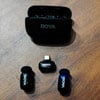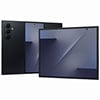It’s hard enough to get used to the commercials that have crept into our favorite streaming services, while prices have also risen. But streamers often crank up the volume on ads to make sure we get the message.
The noise has been heard in California, where the legislature just passed and Governor Gavin Newsom signed a law requiring that video streamers “shall not transmit the audio of commercial advertisements louder than the video content the advertisements accompany.” This law mimics the federal Commercial Advertisement Loudness Mitigation (CALM) Act that already exist for over-the-air broadcasters and cable and satellite TV providers.
However, the law doesn’t take effect until July 1, 2026, and is only enforceable in California, so it's unclear whether streamers like Netflix, YouTube, and Hulu will follow the rules elsewhere. But in our opinion, it is likely they will roll out the feature broadly, rather than maintain separate streaming standards on a state-by-state basis.
Until this new California law hits (and streaming services act), there are still ways you can deal with the commercial volume jump scares. Most modern TVs, streaming boxes, soundbars, and AV receivers provide some type of setting to even out sound levels and prevent these big volume spikes.
The specific terms companies use for the setting vary, and the exact steps may differ among a company’s models, but the principle is the same across all of them. We've compiled the shortest path instructions for popular brands (you’ll use the remote or an app to make the adjustments). Where possible, we provide links to the manufacturers’ help pages for more details.
Televisions (manufacturer's OS)
These instructions are for the operating system made by the TV maker. For example LG WebOS and Samsung Tizen OS. For models running Google TV or Roku, see "Third-Party TV Platforms" below.
Hisense
Settings > Sound > Advanced Settings > Auto Volume Control.
LG (WebOS 6.0 or later)
Settings > All Settings > Sound > Advanced Custom Settings > Auto Volume Control. (LG Support)
Samsung
Settings > Sound > Expert Settings > Auto Volume (Samsung Support)
Sony
Select Display & Sound > Picture & Sound > Sound > Advanced Auto Volume (Sony support)
TCL
See "Third-Party Platforms " for Google TV or Roku, depending on your model.
Vizio
Audio > Volume Leveling (DTS TruVolume).
Third-Party TV Platforms
Amazon Fire TV
Settings > Display & Sounds > Audio > Advanced Settings > TruVolume (Amazon Support)
Apple TV (tvOS)
Press up on the clickpad ring and select Audio icon > Reduce Loud Sounds (Apple Support)
Google TV
Settings > Display & Sound > Audio Options > Volume Leveler.
On TCL models, go to Settings > Display and Sounds > Audio > Advanced Settings >Auto Volume Control
Roku
While watching, press Star button (*) and go to Sound Settings > Sound Mode > Customize Sound Mode > Volume Leveling.
On some devices, you simply press Star > Volume Mode. (Roku Support)
Read more: All of the Roku Streaming Players Compared
Soundbars and AV Receivers
If your soundbar or AV receiver has its own remote control, follow these instructions.
Bose
Press More button > AV Settings > Audio > Night Mode
Hisense
Press EQ button > Night
JBL
Press Night Mode (moon icon) button.
Klipsch
Press Night button, if available.
LG
Using your soundbar remote, open Settings and then select Audio > Auto Volume (LG Support)
Samsung soundbar
Press the Sound Control button (gear icon). Then cycle through sound modes until you see Night Mode on the soundbar's display. Press the up arrow to turn it on.
Sonos
Open the Sonos app. Select your system’s name at the top-left. Select your home speaker, and in the Now Playing screen, select Night Sound.
Sony
Press Night or Night Mode button on your soundbar remote.
Vizio
Press TVOL (TruVolume) on your soundbar remote
Yamaha (soundbar / AVR)
Press Night button on your device's remote (only works with Dolby Digital sources).
[Image credit: Illustration via Midjourney by Sean Captain/Techlicious]

















From grmells on October 17, 2025 :: 8:35 pm
On an LG set if using the optical output to a soundbar the Auto Volume Control option is not available. I am using a Samsung soundbar and will try the Night Mode which I can use.
Reply